Member News
Does your business have exciting news it wants to share with the rest of the Anchorage Chamber membership? To submit an announcement, log in to your Anchorage Chamber profile and complete a News Release. For assistance accessing your account, call (907) 272-2401.
Anchorage Chamber staff will review and approve all submissions.
A Business Owner’s Guide to Securing Digital Intellectual Property
Launching and growing a business today means more than securing customers and building brand recognition — it also means safeguarding your intellectual property (IP). In a world where digital assets can be copied, shared, or misused within seconds, protecting your IP is not optional; it’s essential.
This guide explores practical strategies you can implement to keep your ideas, content, designs, and innovations secure while still running a thriving business.
Understanding Intellectual Property in the Digital Era
Intellectual property isn’t limited to inventions or patents. It includes trademarks, trade secrets, original designs, digital products, and even marketing materials. If competitors or bad actors gain access, your business could lose competitive advantage, revenue, and reputation.
To strengthen protection, consider combining legal safeguards with technological solutions. A mix of proactive registration, careful employee agreements, and digital monitoring tools can reduce your risk.
For example, registering a trademark through the U.S. Patent and Trademark Office ensures your branding is legally protected. Likewise, monitoring your digital footprint with platforms like Brandwatch helps detect unauthorized use of your content.
Why Employee and Partner Contracts Matter
One overlooked vulnerability is human access to sensitive IP. Employees, contractors, or partners often handle client data, internal documents, or financial insights. If these individuals leave without proper restrictions, they may take confidential information with them.
Businesses should avoid casual arrangements when intellectual property is involved. Instead, use clear legal agreements that prevent unauthorized sharing. A Non-Disclosure Agreement (NDA) is one of the most effective tools.
The NDA meaning in legal terms is straightforward: it legally binds signing parties from disclosing sensitive company, client, financial, or strategic information during and sometimes after their tenure. With modern solutions, these contracts can even be signed electronically, speeding up the process.
Practical Steps for Digital IP Protection
Here are some proven strategies to help protect your business IP in a digital environment:
- Register your IP early: File trademarks, copyrights, or patents as soon as possible.
- Use digital watermarking: Add invisible or visible marks to creative content to deter theft.
- Control access: Implement role-based access so only the right people view sensitive files.
- Deploy cybersecurity tools: Protect files with encryption, strong firewalls, and two-factor authentication.
- Document ownership: Keep detailed records of creation dates and authorship.
- Regular monitoring: Use services like Copyscape to detect plagiarism or unauthorized use of your content.
Comparing Protection Tools and Approaches
|
Strategy |
Best For |
Example Tool/Resource |
|
Trademark registration |
Brand names, logos, slogans |
|
|
Digital watermarking |
Images, videos, graphic design assets |
|
|
Cybersecurity measures |
Protecting access to files and databases |
|
|
Content monitoring |
Detecting plagiarism or misuse |
|
|
Legal contracts (NDAs) |
Employees, contractors, partners |
Frequently Asked Questions
What types of intellectual property should small businesses prioritize?
Most small businesses should begin with trademarks for logos and names, followed by copyrights for creative content. Patents are relevant if you’ve designed a unique invention.
Do I need an attorney to register intellectual property?
Not always, but legal guidance can prevent costly mistakes. For example, filing a trademark incorrectly could lead to rejection or limited protection.
How can I enforce my intellectual property rights online?
You can issue takedown requests under the Digital Millennium Copyright Act (DMCA). Many hosting providers and platforms comply quickly with valid claims.
What’s the role of NDAs in protecting digital IP?
NDAs restrict employees, contractors, and partners from disclosing sensitive information. They act as both a legal deterrent and a safeguard if disputes arise.
What happens if someone violates my IP rights?
Depending on the severity, you may pursue civil lawsuits, request financial damages, or negotiate settlements. Monitoring tools make it easier to identify violators early.
Conclusion
Protecting your business’s intellectual property in a digital environment requires both foresight and discipline. By registering assets, using NDAs, investing in monitoring tools, and applying strong cybersecurity practices, you reduce the risk of theft or misuse.
When executed consistently, these steps not only secure your business but also build trust with customers, partners, and investors.
Join the Anchorage Chamber of Commerce today and unlock unparalleled business opportunities, connect with key policy-makers, and become part of a thriving network of nearly 800 members across Anchorage and Alaska!

